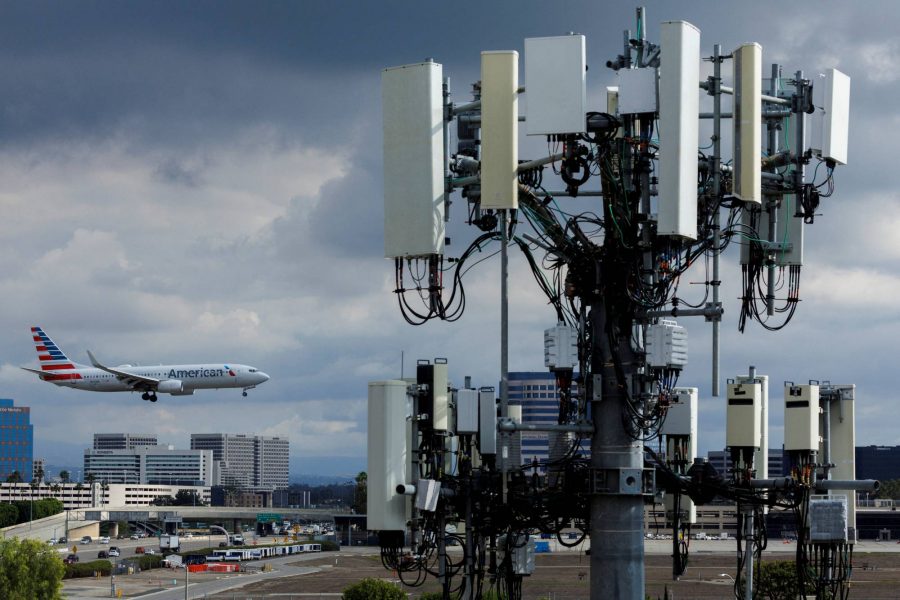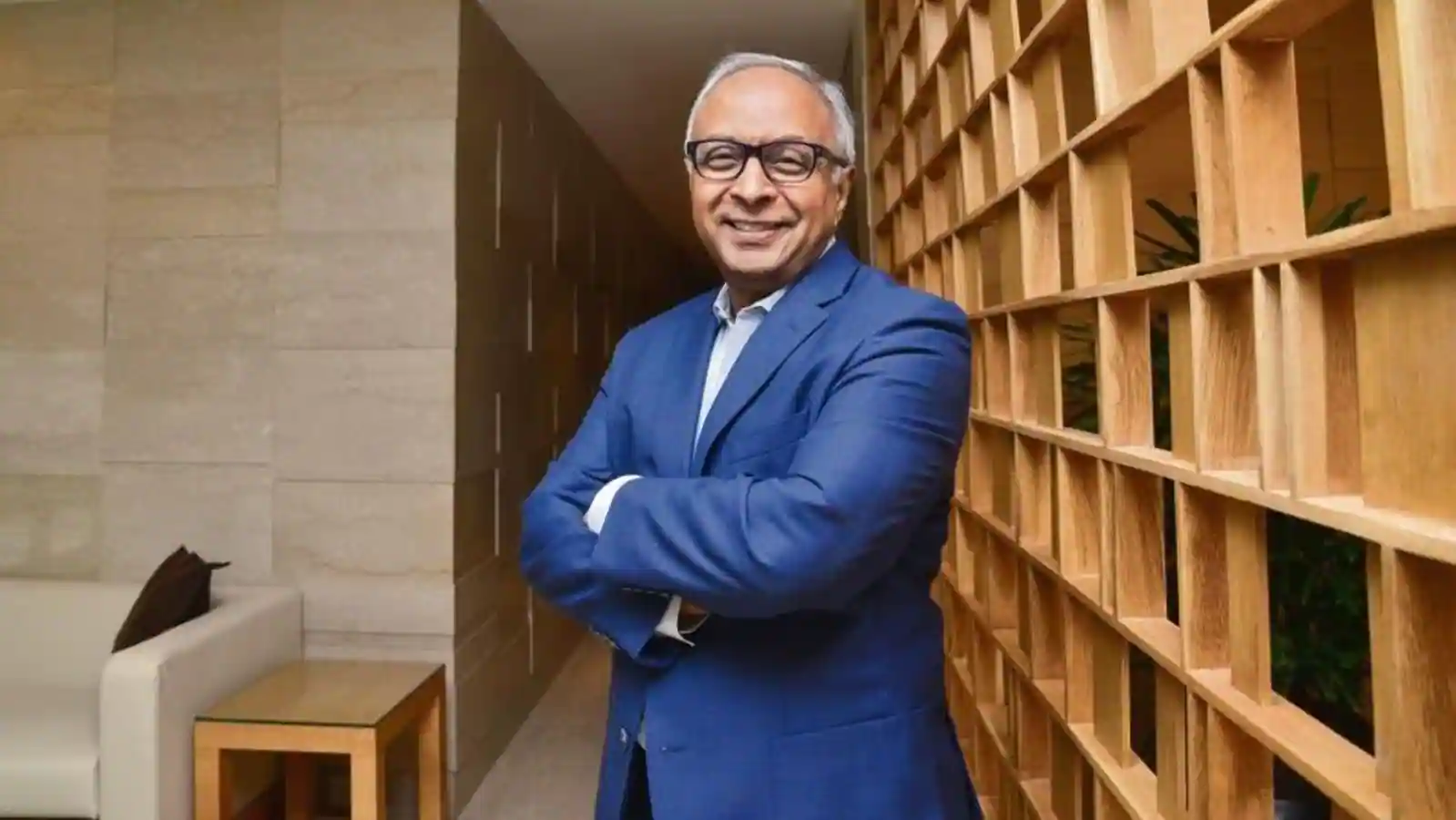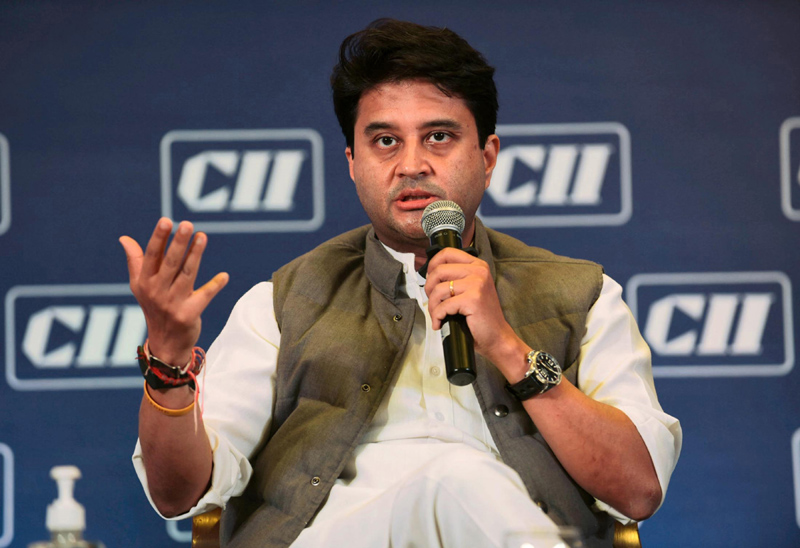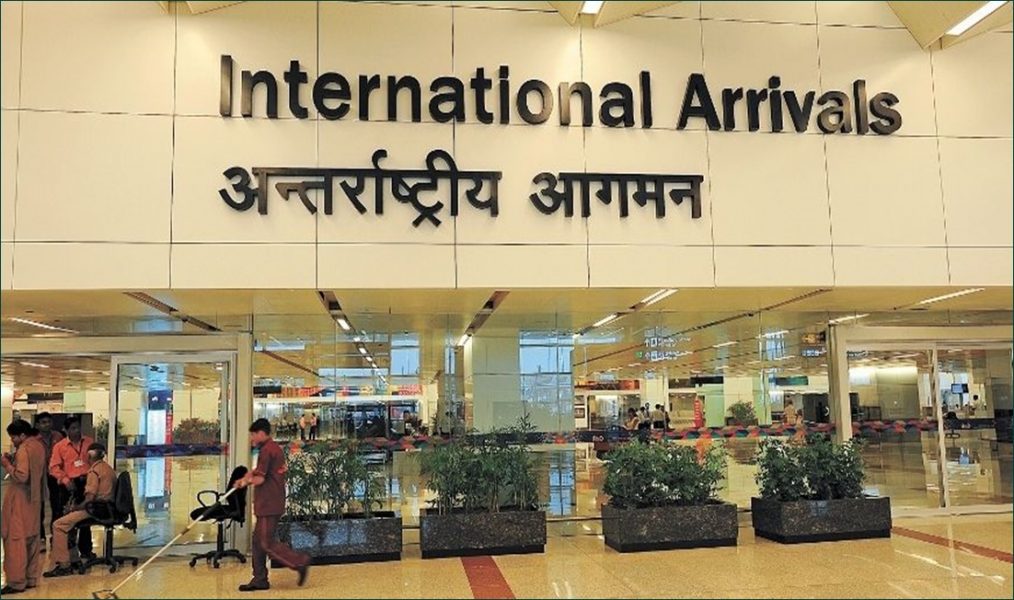HAL signs an export contract with Mauritius for advanced light helicopters
Radhika Bansal
20 Jan 2022
Hindustan Aeronautics Limited (HAL) has signed a contract with the Mauritius government to export one advanced light helicopter (ALH Mk-III) for the country’s police force, an official statement said on Wednesday, January 19.
The Mauritius government already operates HAL-built ALH and Do-228 aircraft. "With this contract (to supply one ALH Mk-III), HAL and the Mauritius government have further strengthened the long-standing business relations spanning over three decades," HAL’s statement noted.
The contract was recently signed between senior officials of HAL and the Mauritius government at the company’s Transport Aircraft Division, Kanpur, the statement mentioned.
https://twitter.com/HALHQBLR/status/1483719917790969861
The contract was signed by B.K. Tripathy, General Manager, Helicopter Division-HAL and O.K. Dabidin, Secretary of Home Affairs, Prime Minister’s Office, Government of Mauritius, recently at HAL’s Transport Aircraft Division, Kanpur.
The helicopter supplied would be used by the country’s police force, it stated. ALH Mk-III is a multi-role, multi-mission versatile helicopter in the 5.5-tonne category.
It has proven its mettle in various roles including numerous lifesaving missions during natural calamities in India and abroad, the statement mentioned.
More than 335 ALHs have been produced to date logging around 3,40,000 cumulative flying hours, it said. "HAL also ensures technical assistance and product support to the customer to ensure healthy serviceability of the helicopter," it noted.
The Indian military has been using the helicopters and in 2020, the Indian Navy commissioned its first squadron.
India has significantly scaled up its capacity-building assistance to littoral states in the Indian Ocean as part of efforts to augment their national capacities. There has also been a particular focus on increasing defence exports in the last few years.
About HAL Dhruv
The HAL Dhruv is a utility helicopter designed and developed by Hindustan Aeronautics Limited (HAL). The development of HAL Dhruv was announced in November 1984. The helicopter first flew in 1992; however, its development was prolonged due to multiple factors including the Indian Army's requirement for design changes, budget restrictions, and sanctions placed on India following the 1998 Pokhran-II nuclear tests. The name comes from a Sanskrit origin word Dhruv which means unshakeable or firm.
HAL Dhruv Mk-III
Dhruv entered service in 2002. It is designed to meet the requirement of both military and civil operators, with military variants of the helicopter being developed for the Indian Armed Forces, while a variant for civilian/commercial use has also been developed.
Military versions in production include transport, utility, reconnaissance and medical evacuation variants. Based on the Dhruv platform, the HAL Light Combat Helicopter (LCH) a dedicated attack helicopter and HAL Light Utility Helicopter (LUH), a utility and observation helicopter, are currently being developed.
HAL Dhruv Mk-III is an improved version equipped with Shakti-1H engines, new electronic warfare (EW) suite and warning systems, automatic chaff and flare dispensers, and improved vibration control system. The first batch was inducted into service in 2012.
Indian Naval Air Squadron (INAS) 323, the first unit of the ALH Mk III helicopter.
The Dhruv has become the first major Indian weapons system to have secured large foreign sales. In 2004 HAL stated that it hoped to sell 120 Dhruvs over the next eight years, and has been displaying the Dhruv at airshows, including Farnborough and Paris to market the Dhruv.
HAL has entered into a partnership with Israel Aircraft Industries (IAI) to develop and promote the Dhruv, IAI has also helped develop new avionics and a glass cockpit for newer variants of the Dhruv.
With a unit price at least 15% less than its rivals, the Dhruv has elicited interest in many countries, mostly from Latin America, Africa, West Asia, South East Asia and the Pacific Rim nations.
Air forces from around 35 countries have made inquiries, along with requests for demonstrations. Flight certification for Europe and North America is also being planned to tap the large civilian market there.
Read next
Amid safety concerns over C-Band 5G rollout and consecutive restrictions on flights to the US,Japan has a simple solution for it
Prashant-prabhakar
20 Jan 2022

As we now know, this wouldn't be the first time 5G has been deployed in countries around the world and oddly enough, aviation operations haven't been affected much, if at all, in that countries-while there has been a massive disruption of flight services at airports and airlines operating to and out of the United States.
Boeing has announced flight restrictions on all airlines operating the Boeing 777 aircraft, and we have cancelled or changed the aircraft for some flights to/from the US based on the announcement by Boeingan ANA spokesman told the Mail
Representative | The Japan Times
When there seems to be no apparent disruption in flight operations in other parts of the world, could this likely be a country-specific issue? The US for instance? Well, it just might be.
The US-specific problem occurs because the so-called C-band of frequencies set aside for 5G by spectrum regulators is closer to a safety-critical aviation band than in the rest of the world, as previously stated. Now that makes flight operations limited to just "Category 1 approaches"- meaning cities such as Seattle, Eugene, Portland, San Francisco, and Spokane, which are notorious for low visibility and low ceilings will experience days of interrupted travel.
The Japanese take on this?
What appears to be a critical issue now, is something that has already been solved a year ago- or at least that's what the Japanese claim.
To avoid the blocking of radio altimeters, the location of the high-power 5G base station should be avoided within 200m from the approaching route of aircraftThe local Japanese scientists apprised the International Civil Aviation Organisation last year
Representative | The Japan Times
According to Gartner analyst Bill Ray, the question is whether radio altimeters RF filters are good enough to exclude bleed-through interference from 5G transmitters, and the Japanese have a simple solution for that- exclude building masts under runway approach paths and at the same time make sure there's enough guard band (unused spectrum) in between the frequencies in use.
In a study conducted by Japan's Electronic Navigation Research Institute (ENRI), experiments were carried out on Rockwell Collins and Honeywell radio altimeters, both companies being major suppliers to Boeing and Airbus, and the reports were submitted to the International Civil Aviation Organisation in March 2020.
Representative | Behance
In the last evaluation we need at least 60MHz of guard band to avoid the blocking to the radio altimeters and 400m of separation distance from the point beneath the aircraft might be needed to make the compatibility in case of the maximum envelope pattern.ENRI
It is to be noted that these findings were reported after ensuring beam-forming antennas were pointed earthwards so the centre of directional high-power pulses can never be transmitted above the horizontal.
What's interesting though, is the fact that these Japanese findings also seem to concur with the UK and EU stance on the 5G issue- who also seem to share the same views as their Asian counterparts.
With the current hue and cry over the C-band rollout and the consequent flight disruptions, should the US also take a page out of their eastern counterparts regarding the 5G spectrum? Or is it too early to speculate? Drop-in your thoughts below.
SOURCE(s)
COVER: Mike Blake | Reuters
Read next
IndiGo CEO urges the government to reduce the excise duty on jet fuel from 11% to 5%
Ridz
20 Jan 2022

Ronojoy Dutta, CEO of IndiGo Airlines, requested the Ministry of Finance to reduce central excise taxes on fuel from 11% to 5% and eliminate customs duties on aircraft repair parts. The civil aviation industry has to pay 21% of its revenues as indirect taxes and this "unreasonable proposition" is resulting in a chronically ill sector.
On January 17, rating agency Crisil said in a report that Indian carriers are likely to incur a massive loss of approximately INR 20,000 crore in 2021-22 due to the third wave of the COVID-19 pandemic and rising fuel prices. Central excise taxes on fuel should be reduced from 11% to 5%, ATF (aviation turbine fuel) should be brought under the GST, custom duties on repair parts should be eliminated.
Dutta requested the Ministry of Finance to take immediate action to address the long-festering problem. As per the latest report, the Aviation turbine fuel (ATF) price was hiked by INR 3,232.87 per kilolitre, or 4.25%, to INR 79,294.91 per kl in the national capital on January 16, 2022.
"Civil aviation provides efficient infrastructure, critical for economic growth and employment in our country. It is an unreasonable proposition to expect that the industry should earn a 21% margin just to pay taxes to the government. This unreasonable proposition is resulting in an industry that is chronically ill and is unable to live up to its true potential of boosting commerce and employment".Ronojoy Dutta, CEO, IndiGo
Crisis faced by IndiGo
The pandemic has sent what was once India's only profitable airline, IndiGo, in deep red. The low-cost carrier (LCC) in October 2021, reported its seventh straight quarterly loss of INR 1,435.7 crore in July-September, 2021, widening from a loss of INR 1,195 crore in the same period in 2020. Even as the loss has increased year-on-year, IndiGo’s loss has more than halved on a sequential basis.
IndiGo Airlines suffered a huge loss in Q2
In Q1FY22, the airline’s loss stood at INR 3180 crore. The sequential improvement can be attributed to the swift recovery in the domestic aviation market, following the disruptions caused owing to the second covid-19 pandemic.
The huge losses have meant that the company's net worth has turned negative to around INR 4500 crore as of September 30, 2021. The company's net worth as of March 31, 2021, was in the positive territory at INR 71 crore.
The civil aviation sector, which was significantly hit by the coronavirus pandemic that had also resulted in the suspension of scheduled domestic and international flights, is slowly coming back on the recovery path, and air traffic is nearing pre-COVID levels.
Aviation Minister urges States and UTs to reduce VAT
Against this backdrop, Aviation Minister Jyotiraditya Scindia has been urging 22 States and UTs to reduce Value Added Tax (VAT) on Aviation Turbine Fuel (ATF) within the range of 1% to 4%, which accounts for a major chunk of an airline's operational costs.
Several states have lowered the VAT on ATF like Jammu & Kashmir – 26% to 1%, Haryana – 20% to 1%, Uttarakhand – 20% to 2%, Andaman & Nicobar – 26% to 1%, Madhya Pradesh (Bhopal & Indore Airport) – 25% to 4%, & Tripura -16% to 1%.
Rationalization of taxes will result in explosive growth for aviation, which will have multiplier effects throughout the economy, stimulating commerce and employment and integrating the different regions of our diverse country closer together.
Aviation turbine fuel (ATF) cost is a significant component of the operational expenses of carriers and the civil aviation ministry has been pitching for lower rates to boost the airline industry that has also been adversely hit by the coronavirus pandemic.
Ronojoy Dutta better known as Rono Dutta is the co-founder, managing director, member of the management committee, and member of the investment committee at Achuthan & Co. L.L.C. Before working here, Dutta was a partner at the firm and also a strategic advisor of AAR Corp.
With over 25 years of experience, in the aviation industry. He served as the President of United Airlines from 1999 to 2002. He is currently the CEO of InterGlobe Aviation Limited which operates IndiGo.
Read next
Jyotiraditya Scindia meets with Commerce Ministry to discuss the launch of a multimodal logistics hub
Ridz
19 Jan 2022

Aviation Minister Jyotiraditya Scindia on January 18 held a meeting with officials of his ministry and the Commerce Ministry on kickstarting multi-modal logistics hubs in India. He tweeted that alongside necessary infrastructure, it was equally important to make our cargo movement processes seamless and customer-friendly.
https://twitter.com/JM_Scindia/status/1483319902509629446
https://twitter.com/JM_Scindia/status/1483319904300601348
He mentioned that he chaired a meeting with officials from the Ministry of Civil Aviation and the Department of Commerce on the way forward for kickstarting multi-modal logistics hubs in India. Department of Commerce works under the Ministry of Commerce and Industry.
The government had on December 30, 2020, approved a multi-modal logistics and transport hub (MMTH) at Greater Noida in Uttar Pradesh intending to make India a strong player in the global value chain.
Multi-modal Logistics Hub, Greater Noida
A multi-modal transport project and a logistic hub that was proposed on 478 hectares of land in Bodaki village during its 123rd meeting at its main administrative building in Knowledge Park-IV.
Later in September 2021, the board approved six new electric sub-stations in Sector Knowledge Park-V, Ecotech 8, 10, 11, Amarpur, and Jalpura. These sub-stations will be in the range of 220KV to 400KV.
The multi-modal transport hub will have a railway terminal, international bus terminal, and Metro connectivity. The railway line is already passing through Bodaki and is connected to the Metro via the Aqua Line of Noida Metro.
The Indian Railways has already given its approval for the railway terminal at Bodaki, from where trains to East UP, West Bengal, and Bihar will be available. Currently, people from Noida and Greater Noida have to go to Delhi to travel by train to these states.
Read next
Keeping in mind the rising global COVID-19 cases across the world as well as in India, the Government of India has decided to extend the suspension of international passenger flights till February 28.
The restriction does not apply to international cargo flights, those approved by the DGCA, and flights from countries with which India has entered into an air bubble arrangement.
https://twitter.com/DGCAIndia/status/1483695808512159744
On December 9, 2021, the DGCA had extended the ban on international flights till January 31 as the Omicron cases were surging in some parts of the world, revoking its decision to resume scheduled international flights from December 15 onwards.
Scheduled international passenger flights services have been suspended in India since March 23, 2020, due to the COVID-19 pandemic. But some special international flights like Vande Matram Mission were operating under ‘air bubble’ arrangements with selected countries till July 2020.
The ‘Air bubble’ arrangement is a special agreement between two countries to operate international flights between both territories.
India currently has a bilateral air bubble arrangement for the operation of special international passenger flights with 28 countries, including Sri Lanka, Afghanistan, Bahrain, Canada, France, Germany, Iraq, Japan, the Maldives, Nigeria, Qatar, the UAE, the UK and the USA.
The other countries with which India has such a pact are Bangladesh, Bhutan, Ethiopia, Kenya, Kuwait, Nepal, Netherlands, Oman, Russia, Rwanda, Seychelles, Tanzania, Ukraine and Uzbekistan.
Read next
Height of metro at airport is being investigated by HC, seeks report from aviation secretary
Radhika Bansal
19 Jan 2022
The Bombay High Court on Tuesday, January 18 asked the Civil Aviation Secretary to act as its special officer and conduct an independent study by looking into the grievances raised in the public interest litigation (PIL) challenging the construction of overground Metro 2B corridor (DN Nagar to Mankhurd), passing through Swami Vivekanand (SV) Road in the vicinity of Juhu airport in Mumbai.
The court, however, permitted the Mumbai Metropolitan Region Development Authority (MMRDA) to continue with preparatory work such as soil testing through geotechnical investigation and utility identification at the site and sought the report from the Aviation Secretary in six weeks.
Bombay High Court
It clarified that apart from such preparatory work, no other work may be carried out without prior leave of the High Court at the site.
The plea stated that the no-objection certificate (NOC) given by the Airport Authority of India (AAI) to MMRDA for construction of the Metro corridor did not take into consideration the “potential threat” posed by the overground route passing through an airport’s imaginary “funnel” zone, the approach path of a low-flying aircraft.
Height of metro at the airport is being investigated by HC, seeks report from aviation secretary
A division bench of Chief Justice Dipankar Datta and Justice Makarand S Karnik was hearing a PIL filed by Harit Desai, social worker and Juhu resident, claiming that AAI, in 2017 had issued a NOC permitting construction of the corridor through the funnel zone in violation of Ministry of Civil Aviation (Height Restrictions for Safeguarding of Aircraft Operations) Rules, 2015.
Advocates Nishant Thakkar and Jasmin Amalsadvala, appearing for the petitioner, said the elevated Metro line would not have stipulated clearance from the funnel zone (area stipulated for take-off and landing of flights) from the eastern side bordering S V Road, therefore, lives of fliers taking off from the strip every year would be in danger.
The bench said the limited issue before it was whether the project has got nod and approvals as per the procedure established in law and even if sound reasons are not given for the same, its hands are tied if the due procedure is followed granting permissions and NOC.
“Accordingly, we proposed that the Director General of Civil Aviation (DGCA)… could be requested to examine the concern raised by the petitioner in the light of his complaint of breach of the provisions of the 2015 Rules by the AAI as well as his apprehension of loss of lives resulting from accidents, if the metro rail line of the MMRDA were commissioned.’’
However, counsel Thakkar brought it to the court’s notice that Arun Kumar, who is the incumbent DGCA, was at the relevant point of time the incumbent joint secretary (airports), ministry of civil aviation, and that he was involved in the decision-making process leading to the issuance of the impugned NOC. He thus requested to substitute the DGCA by the secretary, civil aviation, which the HC accepted after Kumbhakoni and Marne did not object.
Advocate General Ashutosh Kumbhakoni and advocate Akshay Shinde for the MMRDA opposed the plea and said the authority has initiated preparatory work for the project of “public importance” and the same should be allowed to continue till the next hearing, which the court accepted.
Rajiv Bansal, Civil Aviation Secretary
The Court asked Rajiv Bansal, Secretary, Union Ministry of Civil Aviation to examine concerns raised by the petitioner to conduct a necessary investigation, together with a personal visit of the site, if required and to place a comprehensive report on the issue of height clearance granted through impugned NOC.
“He shall also consider the aspect of safety and security of the public, who reside in the vicinity of Juhu Airport, and throw light as to whether commissioning of the metro rail line of the MMRDA would in any way affect aircraft operations at Juhu Airport,” the bench noted. The bench posted a further hearing on February 28.



Comment